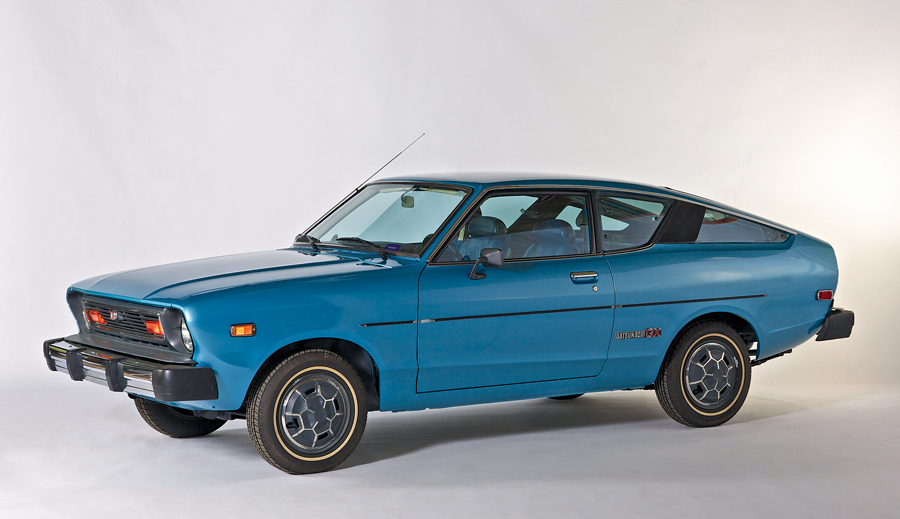
The Datsun B-210 was the right car at the right time. In mid-1973, the OPEC embargo had Americans lining up around the block for gas. The beastly muscle cars of the late 1960s were too thirsty, and the latest replacements from Detroit were strangled and listless.
As if on cue, Datsun kicked off the 1974 model year with an affordable small car that boasted up to 50 mpg. The B-210 was an instant hit. It seemed perfectly designed to compete on all fronts.
A better commuter
The entry-level Datsun B-210 was available as a 2-door or 4-door sedan, a wagon, or as a 2-door hatchback. Early buyers could choose a 4-speed manual transmission or a 3-speed automatic. A 5-speed option was added midway through 1976.
Datsun was careful not to let the B-210 compete too strongly against the overhead-cam 1.6-liter in the 510. American B-210 engine options included a 1.3-liter pushrod 4-cylinder in 1974 and a 1.4-liter thereafter. Officially, the A13 was rated at 75 horsepower, while the A14 made 78 horsepower.
Still, in the 2,000-pound Datsun body, that’s enough to give the B-210 reasonable performance for an economy car of its era. Datsun estimated the B-210 would get from 0 to 60 in 13.2 seconds. Official fuel economy for the 1978 B-210 was 36 mpg city and 48 mpg highway, or 50 mpg if you bought the 5-speed gearbox. The original MSRP of a B-210 was about $2,619 in 1974, rising to $4,468 by 1978.
Honey Bee and GX
The special-edition “Honey Bee” debuted in 1975 as an entry-level model. All true Honey Bees were 2-door sedans with the A14 engine and a 4-speed manual transmission. Honey Bees came with vinyl floor coverings inside and a special side-stripe kit. The stripes were separately purchasable as an accessory, and the Honey Bee became so popular that people actually put the stripes onto more-expensive-trim B-210s.
One of the most popular body choices for the B-210 was the 3-door hatchback. Perhaps it was the squinting resemblance to the Z-car, but the hatch is the B-210 everyone remembers, and along with the Honey Bee, it’s the most collectible model today.
For the North American market, most 1976–78 hatchbacks were delivered as top-trim GX models with carpet instead of vinyl mats on the floor.
Memories and MPGs
I drove an excellent low-miles 1978 B-210 GX hatchback from the Nissan Heritage Collection located at the Lane Motor Museum in Nashville. The drive brought back a flood of memories — but mostly the B-210 performed as expected.
You wouldn’t exactly call this car a barn-burner, but it’s quick enough, and the 4-speed transmission has an admirable crispness. The seats are not as comfortable as I’d like to remember, and the suspension not as smooth. But driving the B-210 left me smiling, recalling a simpler time of life when all we needed was basic transportation and an FM radio.
The challenge with a B-210 is finding a good one. As economy cars, most succumbed to abuse and rust — but better examples are making their way to outlets such as Hemmings and Bring a Trailer. A lovely 1976 hatchback sold for $7,300 on BaT earlier in 2019. Good examples can still be found well under $10,000.
If you’re looking for a fun and unusual vintage racer or track-day car, a B-210 wouldn’t be a bad choice. Many hatchbacks were converted to low-cost SCCA racing cars in the 1980s, and they’re still out there.
If you’re looking to recall some past glory days, a B-210 is a good way to do that, even if it’ll just remind you how far we’ve all come. ♦